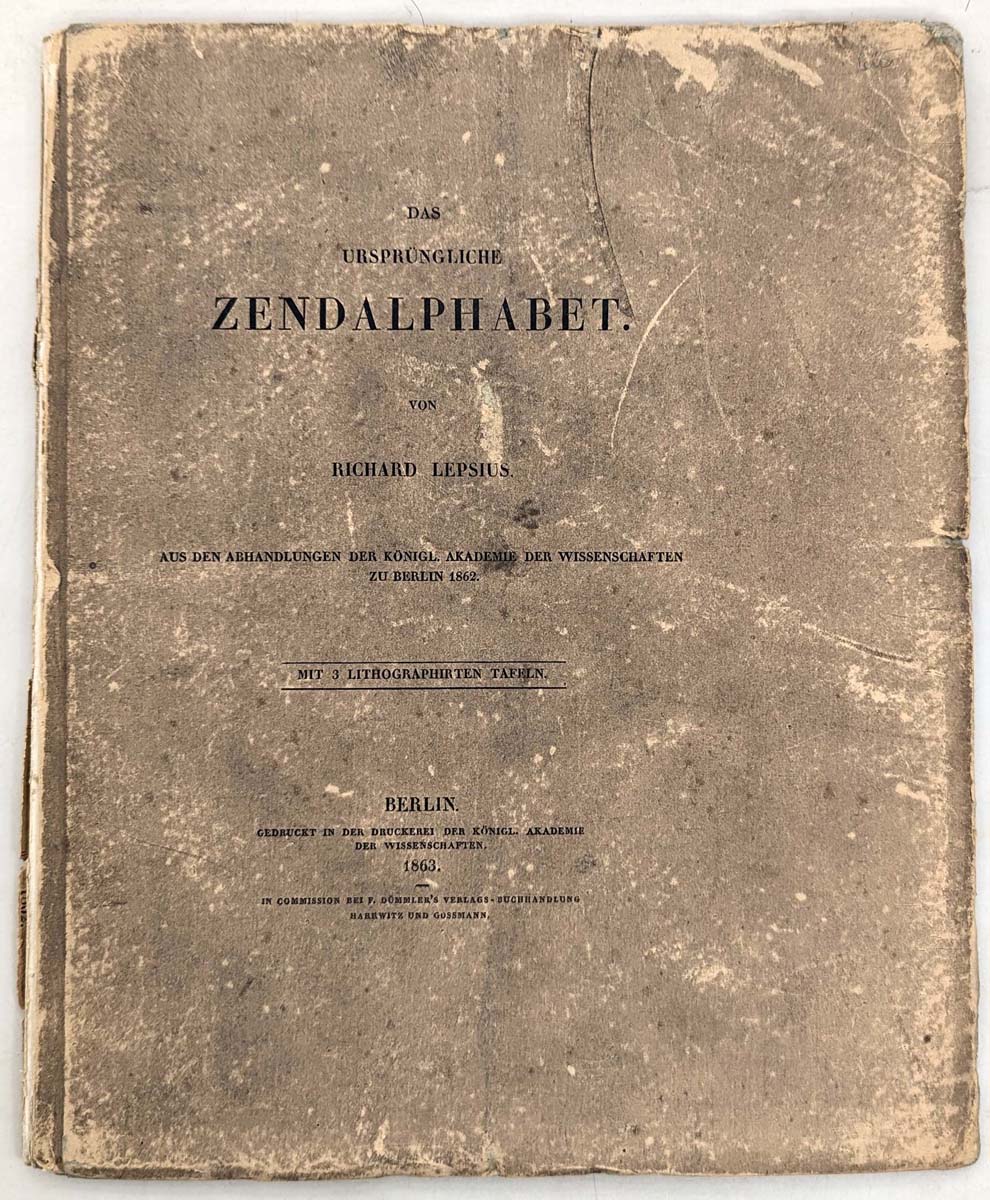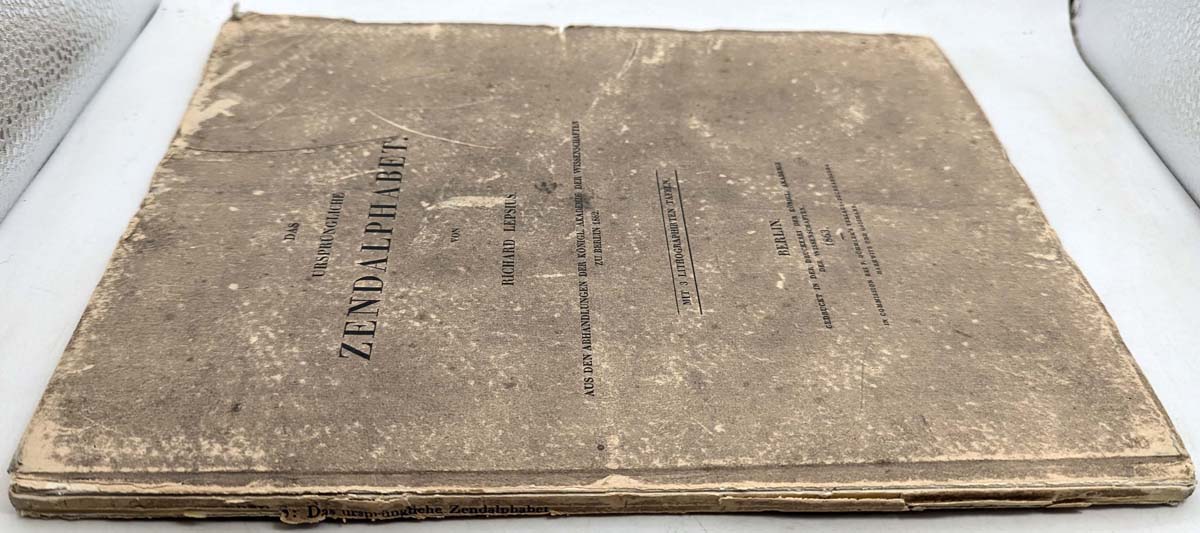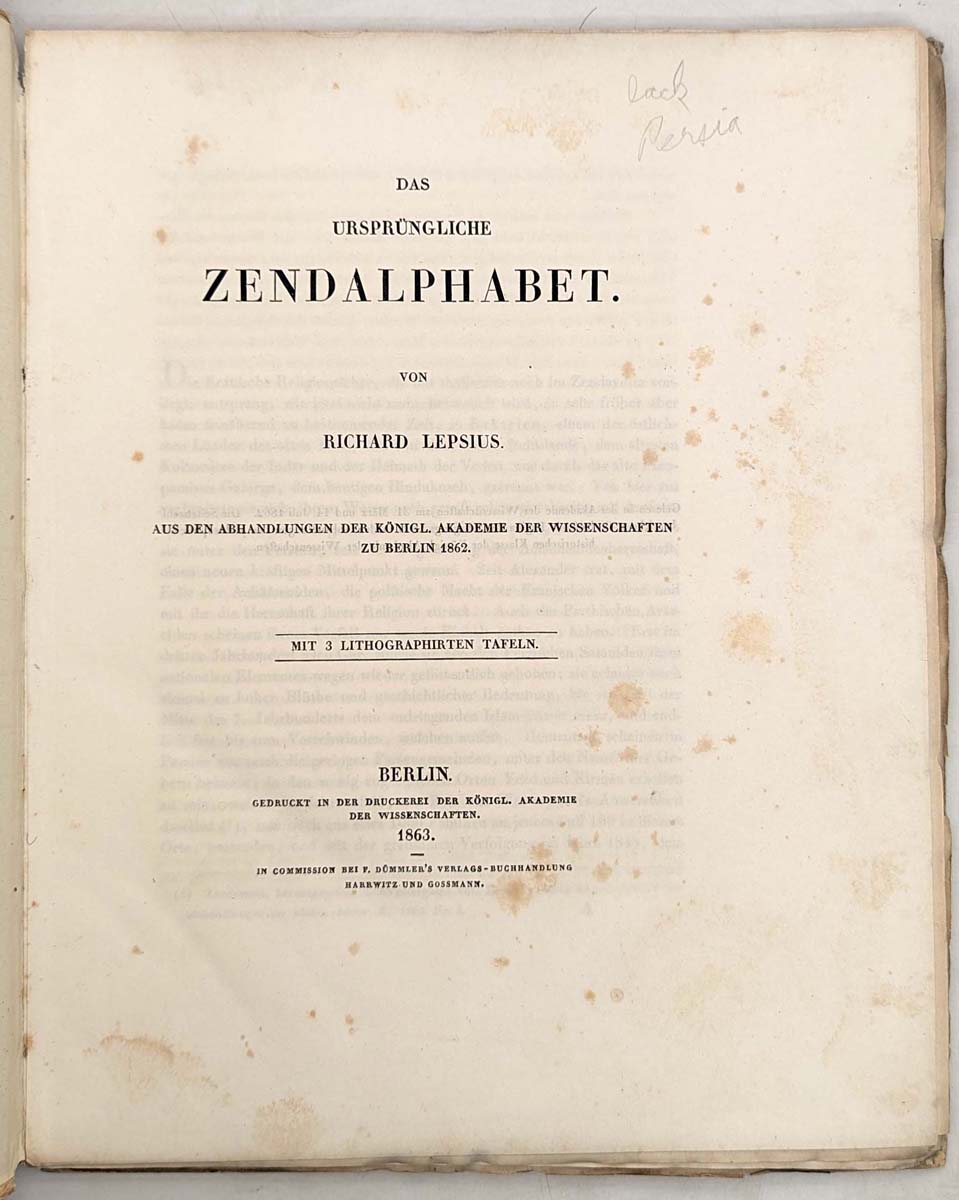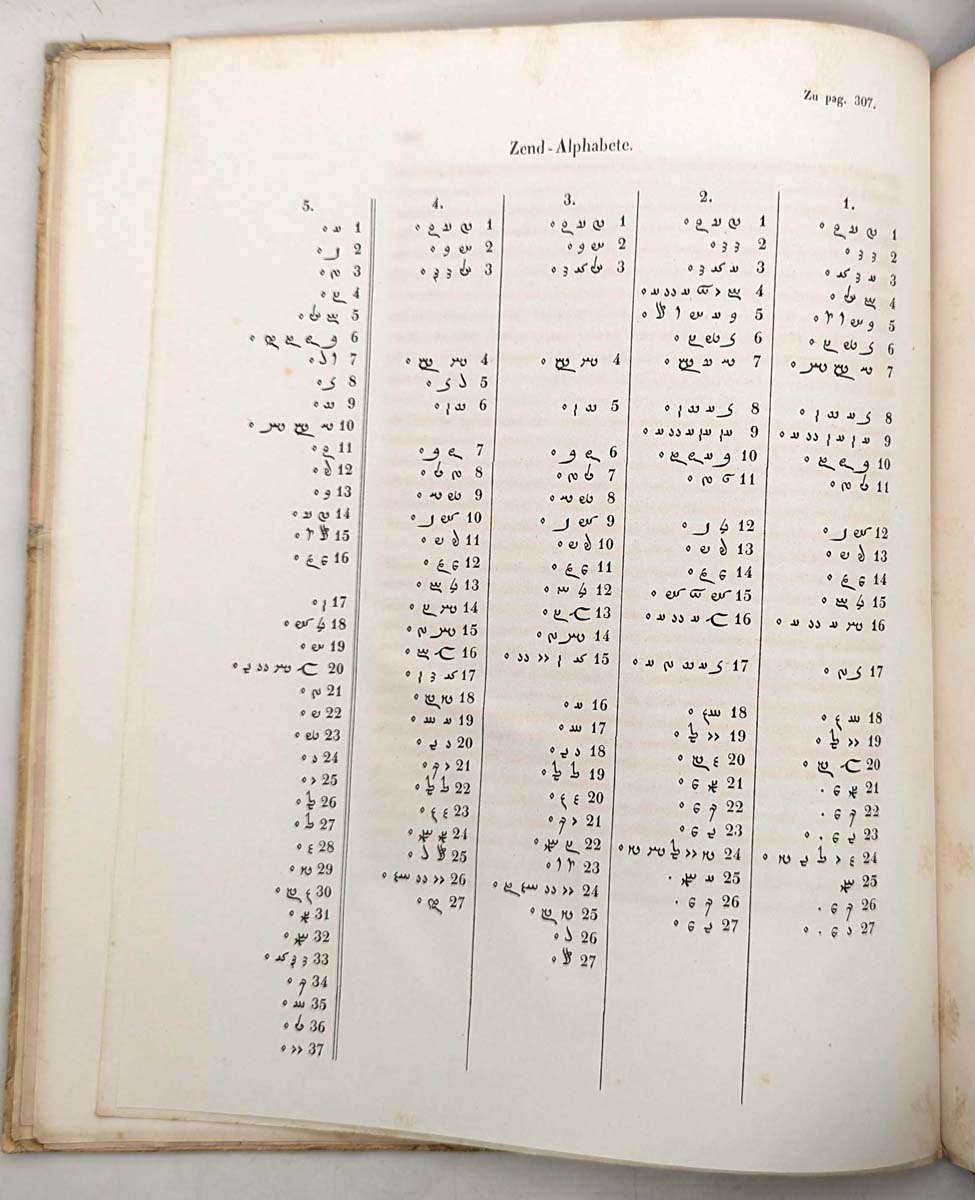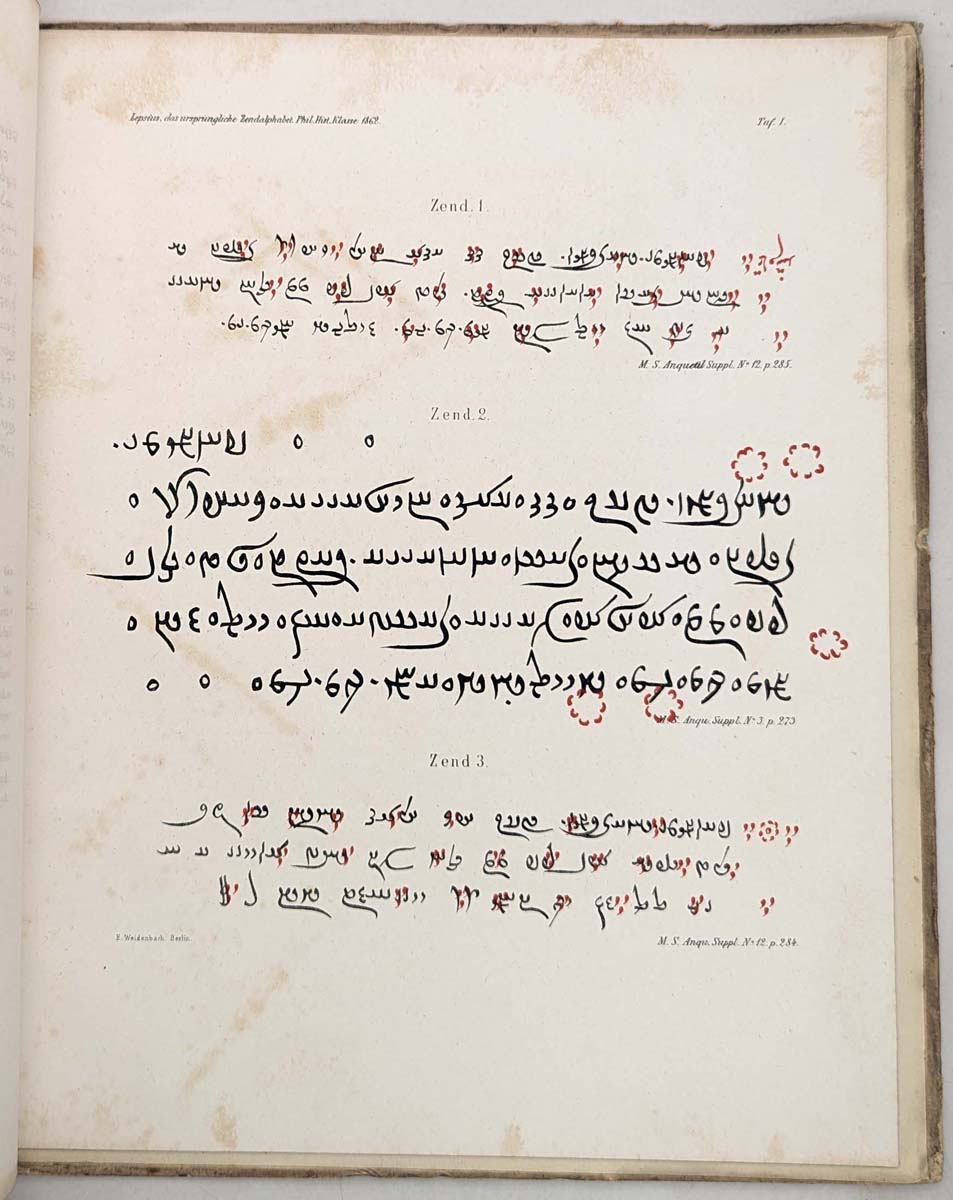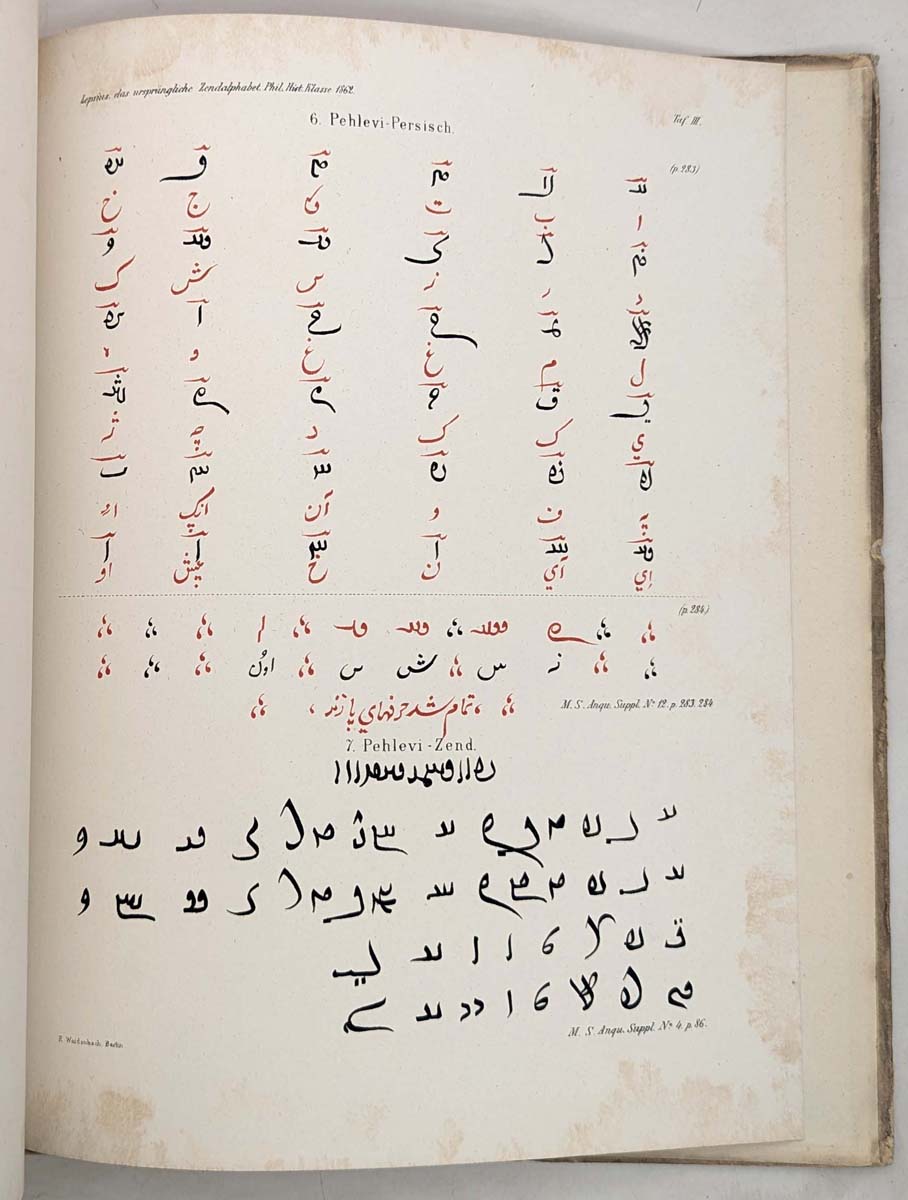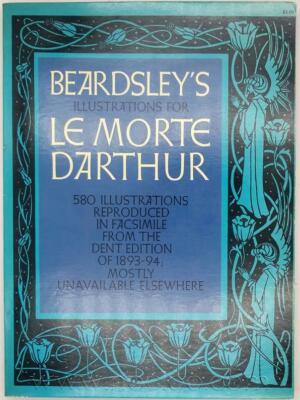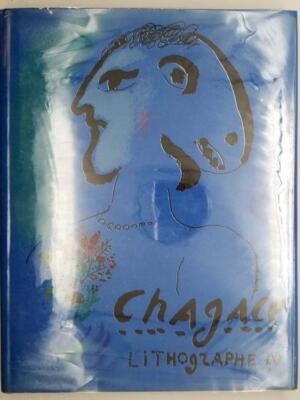Das ursprüngliche Zendalphabet – Richard Lepsius (1863)
This seminal philological work by Richard Lepsius (1810–1884), a pioneering German Egyptologist and linguist, investigates the origins and structure of the Zend alphabet, the script used for writing Avestan (the sacred language of Zoroastrianism). Combining comparative linguistics, epigraphy, and historical analysis, Lepsius traces connections between Zend, cuneiform, and other ancient Near Eastern writing systems.
Lepsius initially used it to transcribe Egyptian hieroglyphs in his Denkmäler aus Ägypten und Äthiopien and extended it to write African languages, published in 1853, and in a revised edition in 1863. The alphabet was comprehensive but was not used much as it contained a lot of diacritic marks and was difficult to read and typeset at that time. It was, however, influential in later projects such as Ellis’s Paleotype, and diacritics such as the acute accent for palatalization, under-dot for retroflex, underline for Arabic emphatics, and the click letters continue in modern use.
Das ursprüngliche Zendalphabet is considered a significant early contribution to the field of comparative linguistics and the study of ancient writing systems.
For Fans of Historical Linguistics:
- Vergleichende Grammatik des Sanskrit – Franz Bopp (1833) – Proto-Indo-European studies.
- The Zend-Avesta – James Darmesteter (1880) – French translation/commentary on Zoroastrian texts.
- Inscriptiones Achaemenidae – Grotefend (1837) – Early cuneiform decipherment.
“A fossilized key to the Garden of Eden’s oldest debates.”
